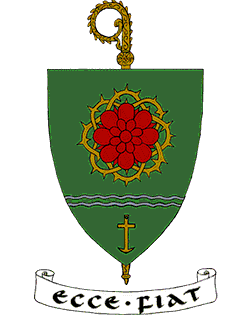Dear Friend of Clear Creek Abbey,
The Russian novelist, Leo Tolstoy, wrote that “happy people have no history.” Other interpretations of this mysterious saying are possible, but here is one: since what we call “history” is often made of wars and death-dealing revolutions, the happiest folk are those who can live for a time in peace, far from that violence and bitter conflict that fill our history books and constitute each day most of the world’s breaking news.
The village that has grown up, little by little, within hearing range of our abbey bells is just such a place—the home of a people with no history. It is a village that hardly has a name. It is never in the news, and its glory lies in its very smallness and in the glad poverty that characterize the deeper Christian vision of the world. Abraham Lincoln, in response to a question about his background, once described himself in a sentence borrowed from Gray’s Elegy Written in a Country Churchyard: “The short and simple annals of the poor.” This too might characterize our little village.
In spite of its obscurity, however, events of the greatest importance have taken place here— miracles even. These are not miracles of the sort that exceed the laws of nature, but those—more wonderful still—wrought by God as a part of His ordinary business. I mean the births of babies. Is there anything in the day’s news as important as a single human birth? In this season following Christmas and Epiphany, we are joyfully and prayerfully aware of one Birth in particular that stands at the center of universal history. In Clear Creek Village, as in the little town of Bethlehem, the greatest things go unnoticed—at least for a time—and are wrapped in silence (not that babies are always lacking vocal power…). Thus, although the happy people who live near our monastery have no history, there is, nevertheless, a story.
This story is woven around the rhythm of daily life and of the seasons. Like those who live in big cities, many of the villagers at Clear Creek have at least some access to the artificial world of modern media. Still, there is here a closer connection with nature and its “rounds.” More than in other places life is a story that follows the rhythm of the liturgy. From the Rorate and O antiphons of Advent to the Puer Natus Est Nobis of Christmas and from the ashes of Lent to the glorious Alleluias of Easter, there is a liturgical season for everything human and divine.
There is also, on the more human side of things, an activity that is obviously something not for monks, but of which we sometimes hear echoes: the village dances. In one way or another, this too has been part of Christian civilization. It was St. Nicolas of Flue, the holy hermit and patron saint of Switzerland, who said, “One goes to prayer as one goes to war; one goes to prayer as one goes to the dance!” G. K. Chesterton rises to new heights of eloquence when he treats this theme.
Dante makes the very heavens dance, in the last pages of the Paradiso; sweeping the sky with swaying and spinning ballets of angels and spirits; and the symbol is very appropriate to the philosophy…A certain break or sharp change in history can hardly be sketched more sharply, than by saying that up to a certain time life was conceived as a Dance, and after that time life was conceived as a Race. Medieval morality was full of the idea that one thing must balance another, that each stood on one side or the other of something that was in the middle, and something that remained in the middle. There might be any amount of movement, but it was movement round this central thing; perpetually altering the attitudes, but perpetually preserving the balance. The Virtues were like children going round the Mulberry Bush, only the Mulberry Bush was that Burning Bush which they made symbolical of the Incarnation… (Chaucer, Chapter 5)
Praise of this life and of its rural mirth and manners, must not mislead anyone, however. Since the day Adam reached out to take for himself what God had forbidden, a law has weighed upon mankind that renders hostile the fields entrusted to man’s care and painful the process of giving birth. In our corner of Oklahoma, a place to which an ancient people was once sent into exile, the soil is poor. Only with the greatest difficulty does a man eke out a living for his family from this flint-covered earth. The one who would be prosperous must learn to do any manner of tasks. But the law of life by which babies continue to appear on the scene, and the eternal call from above that constantly invites man to a supernatural destiny—a call reflected in the celebration of the holy liturgy—infuse hope into a people that, although they have no history, have a story blessed by God.
By the grace of God, while outside our walls babies bring new life to Clear Creek Village, inside the abbey young men continue to join us in order to dedicate their lives to the “School of the Service of the Lord,” as Saint Benedict calls monastic life. With your prayers and help we hope to continue the story that began here over seventeen years ago for the glory of God and for the honor of the Blessed Virgin Mary, Our Lady of the Annunciation. Although historians may never record the name of “Clear Creek” except in its margins, the humble story of what God has done here—both for the monks and for the visitors and friends of the monks—will remain indelibly recorded in the hearts of many.
+ br. Philip Anderson, abbot



